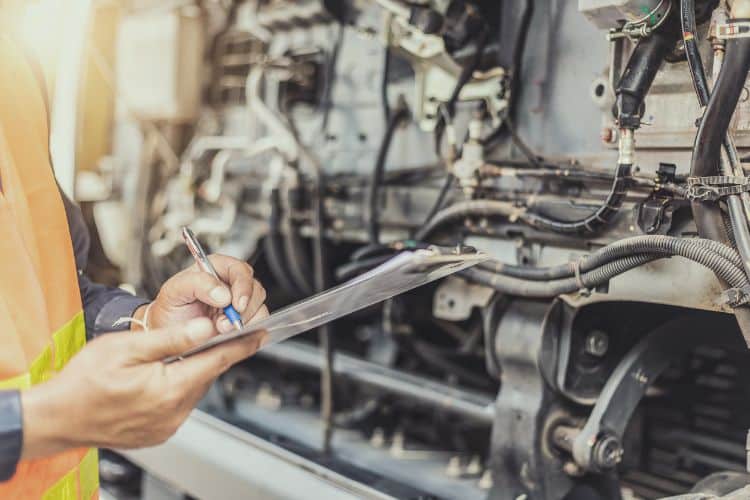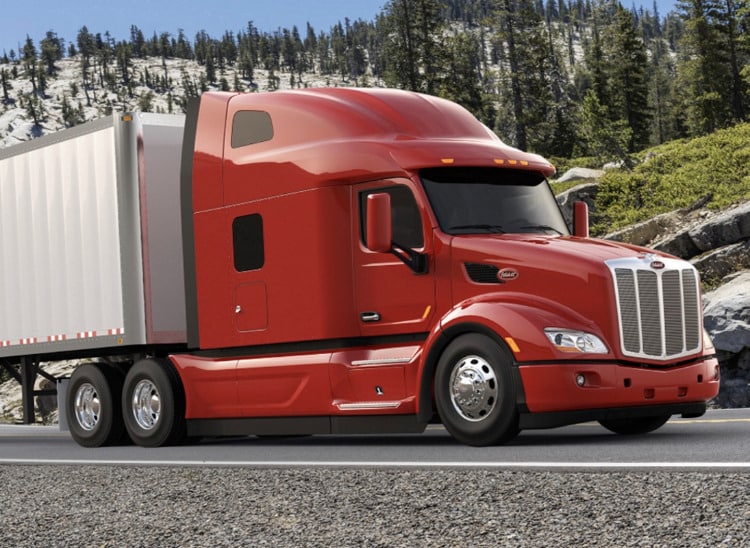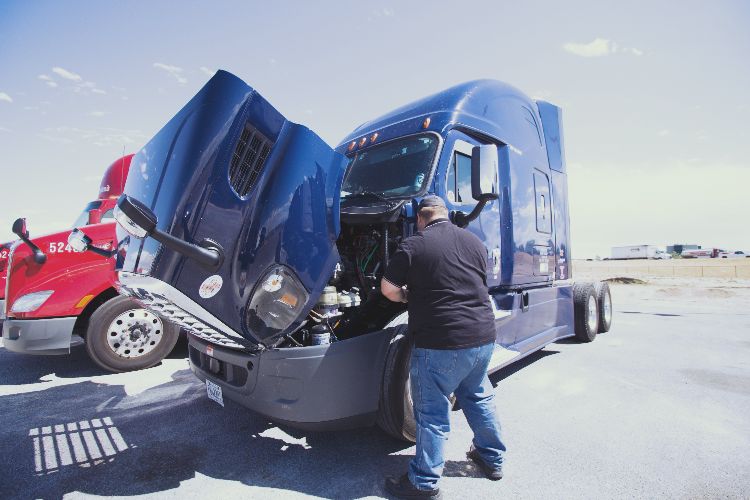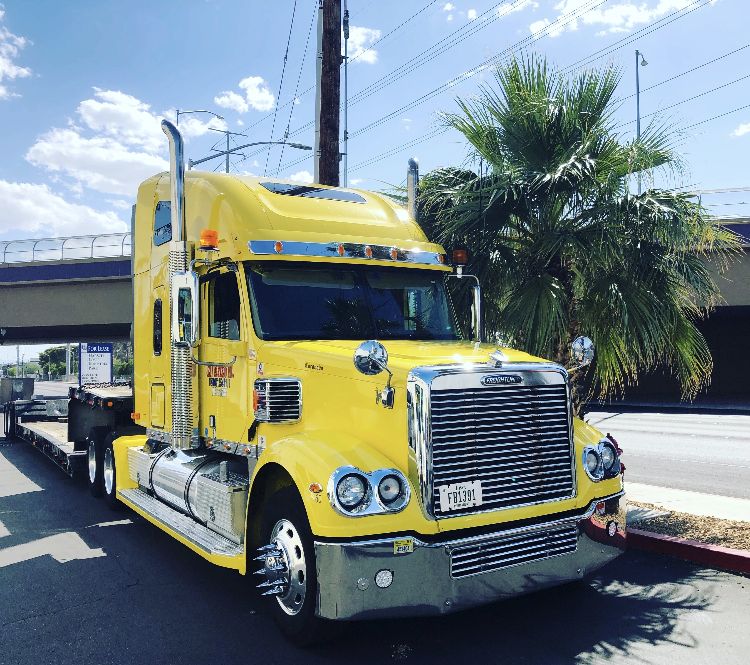With the many millions of miles driven by trucks every year, pre-trip inspections are as important as ever. Even though on average trucks are safer than they ever have been, this is because of the success of regular checking.

Drivers and fleet managers should know their requirements. A pre-trip inspection of about 15 minutes should take place every day before any journey. This will flag up any potential or current problems with the cab, trailer, or coupling. This will then enable any remedial work to be done to keep the truck up to standard, keeping the driver and other road users safe. Prioritizing safety before and after each road trip is key.
The list here is not in any particular order of importance, but each journey should include each of these in its inspection.
Getting Ready
The ideal way to prepare for a pre-trip inspection is to do two things. First of all, have a checklist that contains all the things that need to be checked in and around the vehicle. A good checklist will ensure that everything that needs to be checked will be covered. The headings within this article can provide the basis for a checklist, but your business may have its own that it uses for pre-trip inspections.
If your business does not have a checklist, you could use this article as a basis for creating one, although templates are available on the Internet that can be personalized to your needs.
Checking the Paperwork

If the pre-trip inspection is being done at the beginning of a journey, check the paperwork. This could be checking that the correct goods are in the trailer. It could also involve checking if any import/export documentation is available should you be traveling across borders.
Any documentation relating to the vehicle, e.g., safety certificates, insurance, a driving license should also be checked and made available for easy access if required during the journey. If you are carrying hazardous materials, it is vital to check that all the paperwork is in place for transporting those materials.
Inside the Cab

There are a number of inspections that can take place inside the cab. The most obvious is with regards to the driver’s seat and passenger seat if appropriate, and checking if all seatbelts are working.
The dials and controls that the truck has should be checked that they are all operating, including the horn. Then you should check that there is no damage or obstructions to the windscreen or side windows. You should also check any defrosting or heating equipment in the cab.
Emergency Kit
Trucks should have an emergency kit in case of breakdown. The equipment should be checked on a regular basis, and certainly before embarking on a journey. This is an easy check to forget, but important at any time of year, as an accident can happen at any time.
This emergency kit may include fire extinguishers or fire blankets, which may also be checked separately within the business. This may also include red triangles for breakdowns and spare light fuses.
Checking the Engine

The checking of the engine is perhaps the most important check, as problems here could be catastrophic. A pre-trip inspection of the engine compartment will involve checking for any leaks or damage. This could include oil leaking from where it shouldn’t, or loose hoses or other piping.
Any apparent damage to the engine should be taken very seriously and looked at straight away. A driver who knows his truck will know the sound that it makes, so a pre-trip check could include starting the engine and listening for unusual sounds. This check is particularly important if the truck has not been driven for some time. It would be useful to chock the wheels when running the engine for safety reasons.
Cleanliness
Checking for cleanliness may not seem as important as other checks, but it is a very important part of the pre-trip inspection. A clean, well-looked after vehicle can give confidence to customers that their goods are also looked after.
Mud and dirt on a truck can also sometimes hide major or minor problems underneath that would otherwise be missed. Any areas where air needs to circulate should be checked for ingress of dirt or mud that would make operation difficult.
If mud and dirt are left on the truck, it can eventually cause damage to bodywork. Damage to bodywork can affect the safety and integrity of the truck, so should be cleaned off regularly.
Internal dirt in the cab or junk left around can affect the workings of the defrosting or heating system.
Checking Fuel
Does the truck have sufficient fuel to get going on the journey? Will fuel need to be added soon, in which case where from? Do the fuel gauges on the vehicle work effectively and accurately? Are the fuel lines clean, allowing fuel to easily get to the engine? Many of these can be checked either before the interior cab inspection or whilst inspecting the engine.
Battery Check
The battery should be checked for effective operation. The terminals connecting the battery to the vehicle can be checked for damage or corrosion. Many trucks allow the connection of a battery voltage tester via the in-cab cigarette lighter. This can confirm whether the battery is charging correctly. The check should also test that the battery is seated correctly and does not move during transit.
The Coupling System

The coupling system is a vital system for any truck, connecting the truck to the trailer. This check should involve checking that the electrical and air lines are properly connected. There should be no obstructions or any sign of wear and tear on the lines that could indicate a potential failure. Check that the electrical line has no exposed wires. Check that the air lines have no leaks, rotting, or cracks.
The Trailer
The trailer should be checked from the front to the back to check that all connections are secure. There should not be any missing rivets or holes in the headboard or nearby. The landing gear should be checked for sturdiness and solidity. There should be no signs of cracks, broken or bent areas, as these could cause catastrophic failure.
The suspension and the brake system should be checked on the trailer as well as on the cab. This is because they are independent in operation from the trailer and therefore could have their own problems.
Tires

The tires on both the cab and the trailer should be checked thoroughly. All tires, including spare tires, should have sufficient depth of tread. Mud flaps should also be secured in place so that they can operate properly. Wheel nuts can also be checked for tightness and to ensure that none are missing.
Lights
The lights are a huge part of other drivers on the road knowing your intentions as well as keeping you safe. The lights on the front of the cab should be checked – headlights, sidelights, and indicators. Then the lights on the trailer should also be checked – rear lights, indicators, and brake lights. Do not presume that as the lights work on the cab that they work on the trailer.
When checking the lights, do not forget to check the reflectors. These become particularly important for driving in the dark but are vital at any time.
Air Brakes
The air brakes can be checked by means of a leak down test, to ensure that there is no loss of pressure nor leaks in the system. This will also test the warning system that warns the driver of problems.
Takeaway
With the safety of vehicles being paramount, and roadside inspections common, the pre-trip inspection is vital. It gives the driver, the business, and the customer confidence that both the truck and the goods transported are as safe as possible.

Geoff is a freelance writer at TruckersTraining.com with 20+ years of experience driving trucks and buses, dispatching, supervising, and training commercial driving teams. His expertise is writing topics on the transportation and trucking industry, and information technology trends.